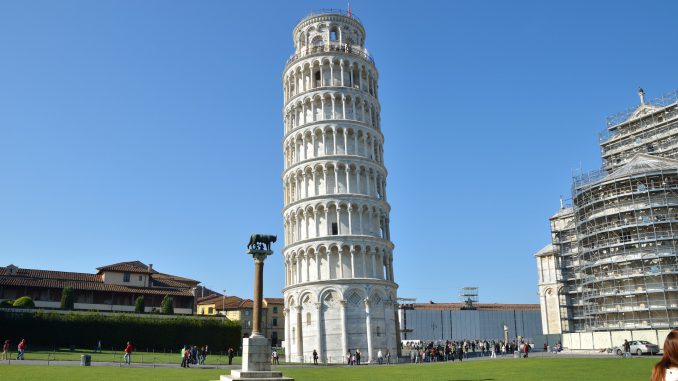
The Tower of Pisa (Torre di Pisa) affectionately known as the Leaning Tower of Pisa is a freestanding bell tower of the cathedral in the city of Pisa in Italy. Situated behind the cathedral in the city’s Cathedral Square, the tower was recognized as a beautifully designed but little known structure until it started to tilt. Construction of the medieval tower in the Romanesque style was started in 1173 and it was not completed for more than 200 years in 1399.

The lean of the tower started during its construction and was caused by a foundation built on ground that was too soft on one side to support the weight of the tower. While it was a slow lean of the tower it began to speed up once it got started. The tilt of the bell tower has been stopped and the angle was partially corrected because of fear that the tower would eventually fall.
The tower along with surrounding buildings including the cathedral, baptistery, and cemetery included in the Piazza del Duomo were established a UNESCO World Heritage Site in 1987.
Tower of Pisa Facts
- The tower is 185 feet tall on the high side and slightly lower (183 feet) on the low side.
- The tower weighs 14,500 metric tons.
- The tower’s greatest lean was 10 degrees until 1990 when it was partially corrected.
- The city of Pisa got its name from the Greek word for “marshy land”.
- Galileo was baptized in the baptistery at Pisa in 1565.
- The cathedral and baptistery are sinking as well.
- The tower leans so much that it is five meters off perpendicular at the top.
- It is unknown who the original architect of the tower was.


